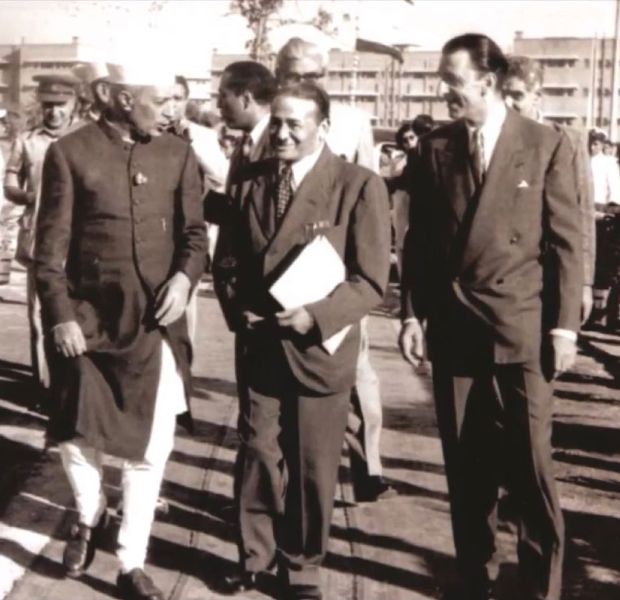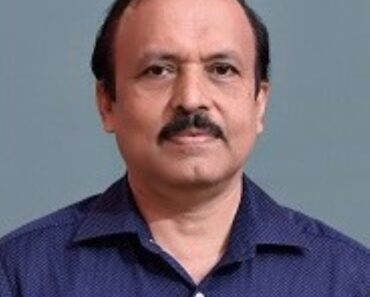Shanti Swaroop Bhatnagar (1894-1955) was an Indian scientist. He was the Founder Director of the Council of Scientific and Industrial Research (CSIR) and the First Chairman of the University Grants Commission (UGC). He is referred to as “The Father of Research Laboratories in India.”
Wiki/Biography
Shanti Swaroop Bhatnagar was born on Wednesday, 21 February 1894, (age 60 years; at the time of death) in Bhera, Punjab Province, British India (now in Punjab, Pakistan). In 1901, he studied at a private ‘maktab.’ Later, he attended A.V. High School Sikandrabad in the United Provinces (now Uttar Pradesh), where he studied till 1907. After that, he joined Dyal Singh High School in Lahore. After matriculation, he joined Dyal Singh College, Lahore, in 1911. Later, he pursued a B.Sc. degree at the Forman Christian College. He graduated with an M.Sc. in chemistry from Forman Christian College in 1919. In 1921, he received a D.Sc. degree from London University.
Physical Appearance
Height (approx.): 5′ 6″
Hair Colour: Black
Eye Colour: Black
Family
Parents & Siblings
His father, Parmesliwari Sahai Bhatnagar, was a graduate of Punjab University, and her mother, Parbati Bhatnagar, was a homemaker. His father refused to do the executive service and became the headmaster of a high school in Bhera. He also was a Puritan and joined the Brahmosamaj. Shanti Swaroop had an elder sister and a younger brother. He was only eight months old when his father died. After the death of his father, he lived with his maternal grandfather who was an engineer.
Wife & Children
In 1915, Shanti Swaroop Bhatnagar got married to Lajwanti. He had two sons and two daughters. His wife died in 1946. After the death of his wife, he lived with his son and daughter-in-law.
Other Relatives
His paternal grandfather, Rai Bahadur Munshi Manohar Lal Bhatnagar, held a judicial post and was considered a very honest person. Rai Bahadur’s brothers also held high executive and judicial posts. His maternal grandfather, Pearcy Lal, was one of the first to qualify as an engineer from the famous Roorkee College.
Signature/Autograph
Career
Academic
After his return from London University in August 1921, Shanti Swaroop Bhatnagar was appointed as the Professor of Chemistry at BHU. His most active years for his work were as a Professor at Punjab University. His major fields of study at Punjab University were colloid chemistry and magneto-chemistry. He worked at Punjab University for 16 years.
Scientific
Shanti Swaroop Bhatnagar solved the mud problem (in the process of drilling for oil, the Attock Oil Company at Rawalpindi were using a drilling mud which when it came into contact with saline water set into a solid mass hardened further and rendered all drilling impossible) faced by the Messrs Steel Brothers & Co., London. He solved the problem by adding an Indian gum which had the remarkable property of lowering the viscosity of the mud suspension and increasing at the same time its stability against the flocculating action of electrolytes. The firm offered a sum of one lakh and fifty thousand rupees to Bhatnagar. He gave a considerable part of that amount to the Chemical Department of your University, to create an Industrial Research Department, in which some research scholars could develop new processes for the industrial utilization of Indian raw materials. As a result of this, important investigations were carried out on the subjects of deodorization of waxes, increasing the flame height of kerosene, lubrication, prevention of corrosion and utilization of waste products in the vegetable oil and mineral oil industries.
Council of Scientific and Industrial Research (CSIR)
The Government of India set up the Council of Scientific and Industrial Research and appointed Shanti Swaroop Bhatnagar as the Director.
Secretary – Government of India
He was the Secretary to the Ministry of Education in 1947 and 1948. Dr Bhatnagar was appointed the first secretary of the Ministry of Natural Resources and Scientific Research which was set up in 1951.
University Grants Commission (UGC)
Shanti Swaroop Bhatnagar was the first chairman of the University Grants Commission.
Father of Research Laboratories
Shanti Swaroop Bhatnagar played a crucial role in establishing 12 national laboratories in India including the Central Food Processing Technological Institute at Mysore, the National Chemical Laboratory at Pune, and the National Metallurgical Laboratory at Jamshedpur.
Awards, Honours, Achievements
- In 1912, Bhatnagar received the “Best Play of the Year” award for his play ‘Karamati’ from the Saraswati Stage Society.
- In 1943, he was elected as an Honorary Member of the Society of Chemical Industry, London.
- In 1943, he was elected Fellow of the Royal Society, London.
- In 1954, he was awarded the ‘Padma Vibhusan’ by the President of India.
- In his honour, the Shanti Swarup Bhatnagar (SSB) Prize for Science & Technology was originated. The first award was given in 1958.
Death
Shanti Swaroop Bhatnagar died on 1 January 1955 due to a heart attack. After his death, Jawaharlal Nehru said,
I have always been associated with many prominent figures eminent in other ways, but Dr Bhatnagar was a special combination of many things, added to which was a tremendous energy with an enthusiasm to achieve things. The result was he left a record of achievement ‘which was truly remarkable. I can truly say that but for Dr Bhatnagar you could not have seen today the chain of national laboratories. It is sad that he should have passed away suddenly in this way. There are many things which he had discussed with me and which we hoped to put through soon. We want many more scientists like him if we are to go ahead and solve our problems.” ((Indian National Science Academy))
Facts/Trivia
- He created a poetry collection titled ‘Lajwanti’ in which he wrote many poems in the Urdu language in memory of his wife.
- ‘Kulgeet’ of BHU was written by him.
- Bhatnagar jointly with K. N. Mathur wrote the book ‘Physical Principles and Applications of Magneto Chemistry’ which was published by Macmillan Publishers.
- Bhatnagar with Dr N. Mathur invented an instrument called Bh-M-I-B (Bhatnagar-Mathur Magnetic Interference Balance) in 1928. It is used for measuring magnetic properties.
- He became interested at a very early age in his grandfather’s instruments, Euclid and algebra, and in making mechanical toys.
- While growing up, Bhatnagar developed an interest in Urdu poetry. His maternal uncle Munshi Hargopal Tufta was a great Urdu poet who was given the title of Mirza by the noted Urdu poet Mirza Ghalib.
- He learnt the basics of sciences from Moulvi Talib Ali Paband, Mohd. Ashraf, and Lala Bishen Narain Mathur.
- He had a fascination for conducting experiments which involved the production of string telephones, electrical fields, and electrical batteries.
- P. E. Richards, an Oxford graduate, was a professor of English Literature in the Dyal Singh College. His wife, Norah Richards, started the Saraswati Stage Society in Lahore. Later, Bhatnagar became an active member of the society.
- The first research done by Bhatnagar was under his M.Sc. degree on the topic of surface tension. He did this research with Professors K. T. Compton and A. H. Compton.
- At the Forman Christian College Bhatnagar became a demonstrator in the physics and chemistry departments. Later, at Dyal Singh College he became the Senior Demonstrator.
- He was introduced to professors like Haber, Freundlich, Bodenstein, Nernst, Einstein, Planck, Urbain, and Perrin during his research study at the Kaiser Wilhelm Institute, Dahlem, Berlin, and at the Sorbonne, Paris during the summer vacations at the London University.









